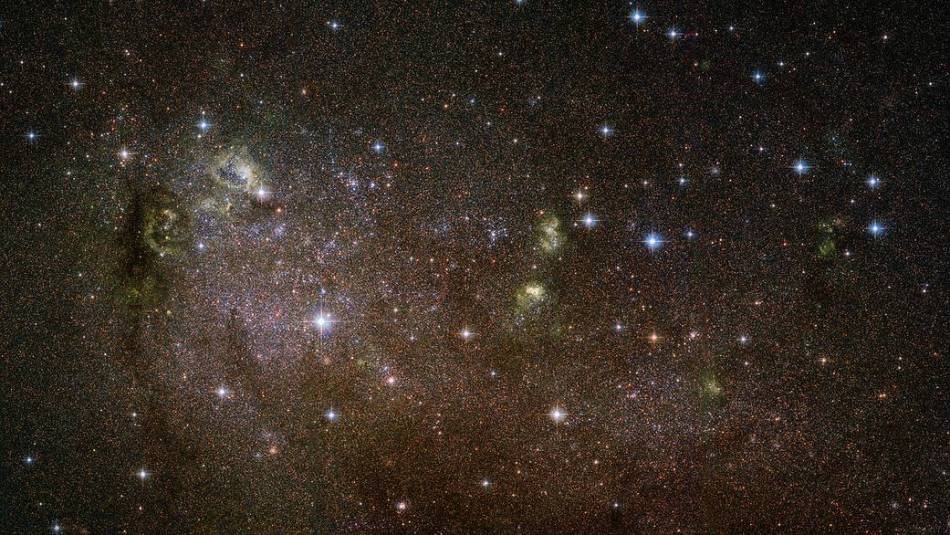Jun 24 2019
IC 10, which is an amazing celestial object, is the closest-known starburst galaxy. This means that it is experiencing a violent spell of star formation boosted by abundant supplies of cool hydrogen gas.
 This image shows an irregular galaxy named IC 10, a member of the Local Group—a collection of over 50 galaxies in our cosmic neighborhood that includes the Milky Way. (Image credit: NASA, ESA, and F. Bauer)
This image shows an irregular galaxy named IC 10, a member of the Local Group—a collection of over 50 galaxies in our cosmic neighborhood that includes the Milky Way. (Image credit: NASA, ESA, and F. Bauer)
The hydrogen gas condenses into enormous molecular clouds, which subsequently transform into dense knots in which temperatures and pressures reach a point adequate to kindle nuclear fusion, thereby forming new generations of stars.
IC 10 is an irregular galaxy and hence lacks the splendid shape of spiral galaxies, for example, the Milky Way, or the spherical, heavenly appearance of elliptical galaxies. In spite of its relative proximity of 2.2 million light-years to Earth, it is a faint object.
In practical terms, IC 10 became known to humankind only in 1887, when Lewis Swift, an American astronomer, found it as part of an observation campaign. The small galaxy is still hard to investigate since it is situated along a line-of-sight that is jammed with cosmic dust and stars.
Nikolaus Sulzenauer entered one version of its image into the Hubble’s Hidden Treasures image processing competition and went on to win the 10th prize.